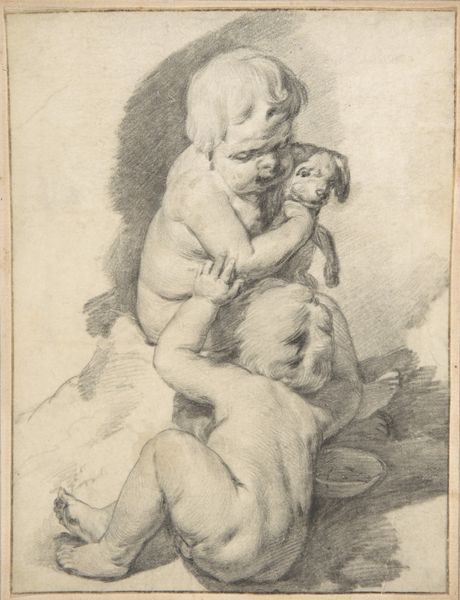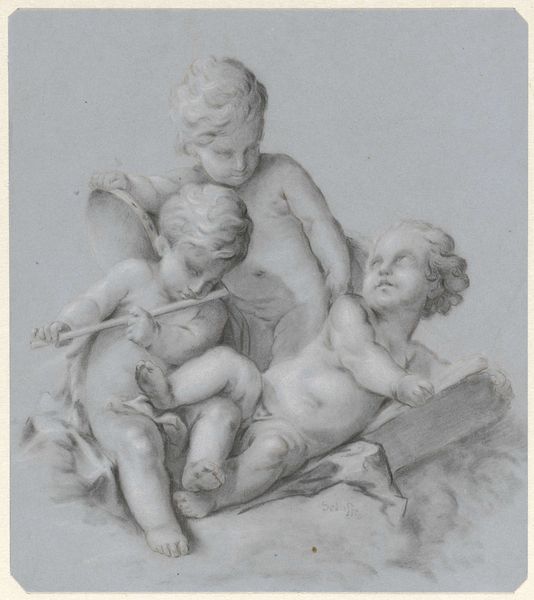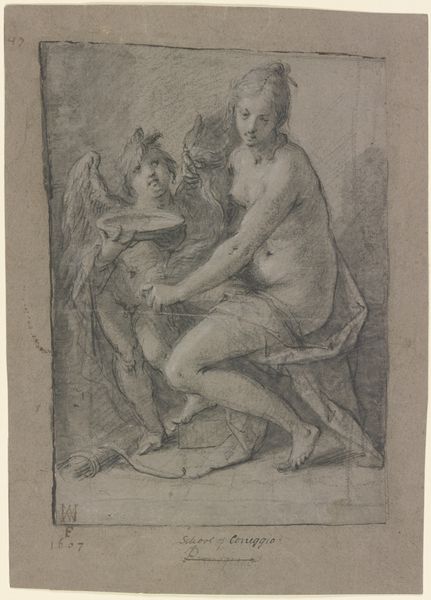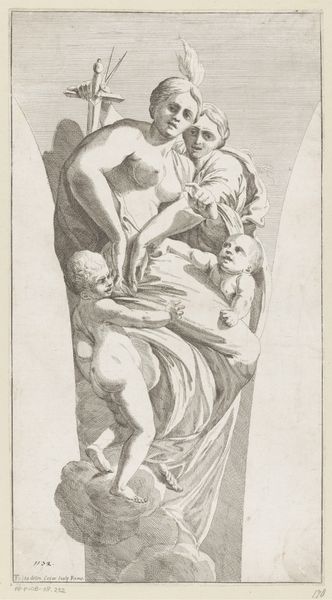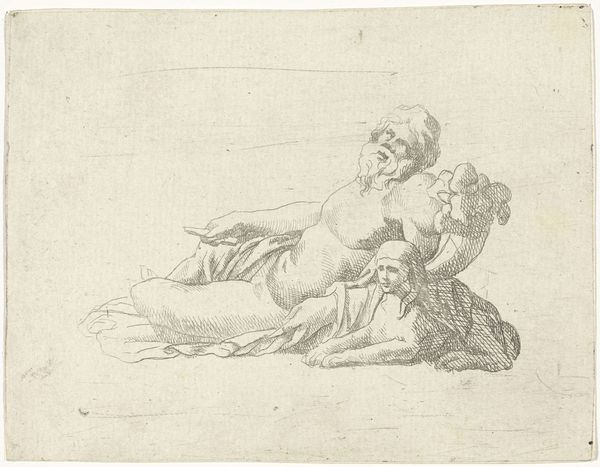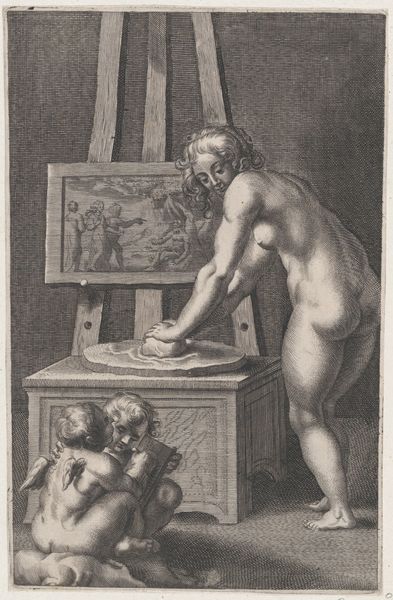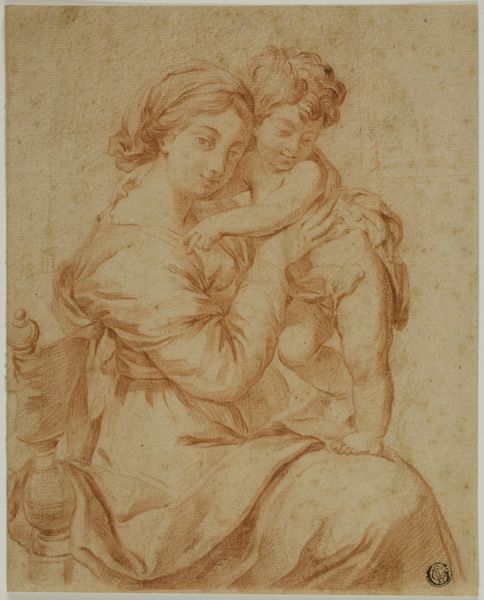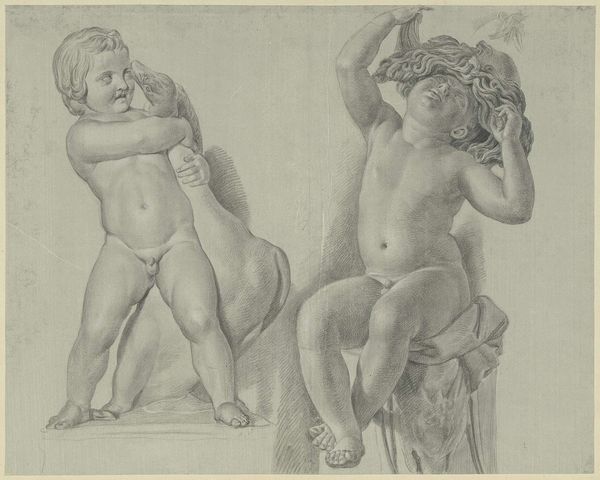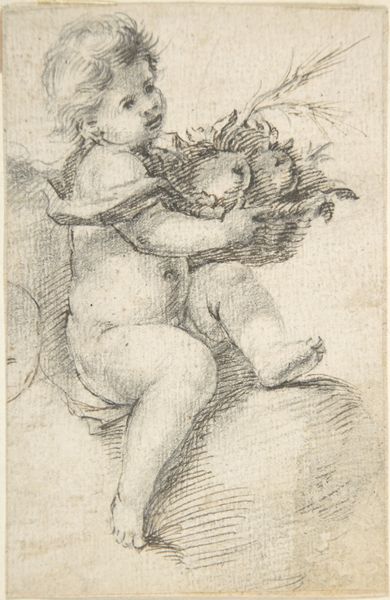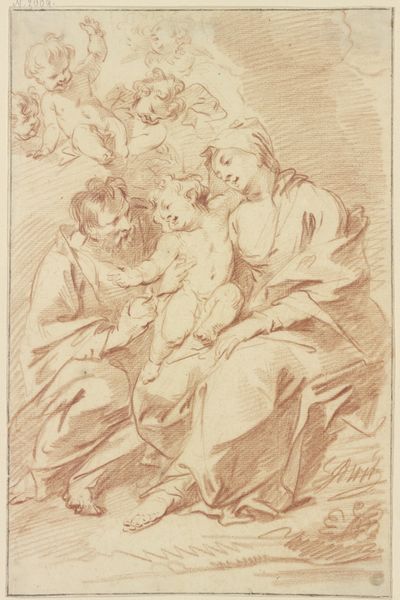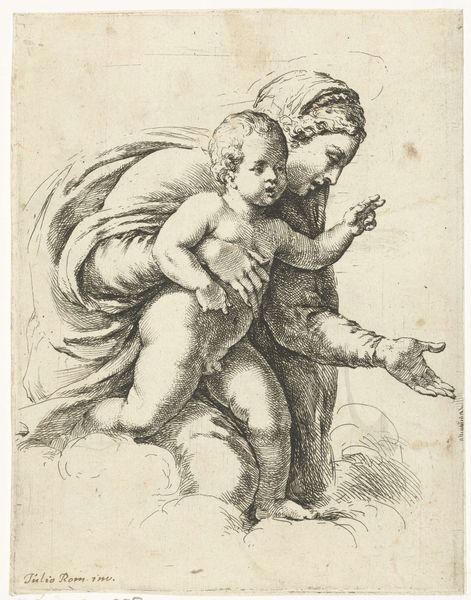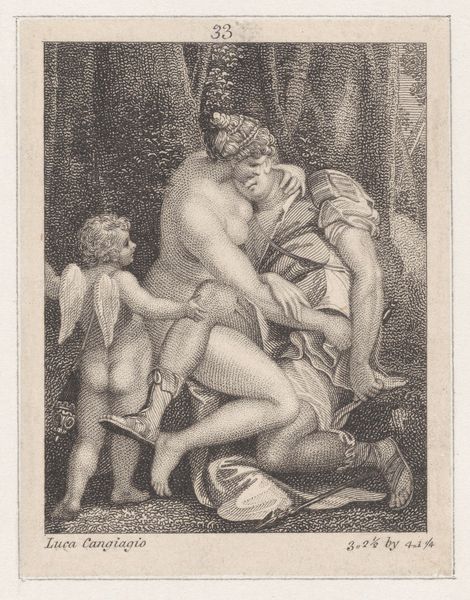
drawing, charcoal
#
portrait
#
drawing
#
baroque
#
dog
#
charcoal drawing
#
portrait drawing
#
genre-painting
#
charcoal
Dimensions: height 253 mm, width 177 mm
Copyright: Rijks Museum: Open Domain
Curator: Just look at the rosy hue in this portrait drawing—it feels so soft and delicate. Editor: It is quite endearing, yes. "Two Children with a Dog" is attributed to Nicolaas Verkolje and believed to be made sometime between 1648 and 1671. It resides here at the Rijksmuseum, executed in charcoal. The mastery is in how he coaxes dimension out of the charcoal. Curator: And consider what charcoal signifies here! It speaks of transience, ephemerality—a readily available material yet so susceptible to smudging. Think of the soot-covered laborers of the time, contrasted against these idealized, fleshy forms of childhood, capturing them through an inexpensive and humble medium. Editor: An interesting contradiction. It forces us to consider who could afford such art, and how notions of childhood innocence were being manufactured, consumed. Even in a drawing like this, intended as perhaps just a sketch, there's a social currency being traded. Curator: I see how those ideas apply. And the use of such a yielding material as charcoal to build forms hinting at monumental sculpture is rather ingenious. But look at how the bodies are positioned! Awkward, yes? Almost piled atop each other. What’s being suggested about proximity and dependence? Editor: Perhaps exploring familial relations and obligations, then? The dog, though, seems like a straightforward marker of domestic tranquility—yet even that small animal carries echoes of privilege. Pure breeds are selectively reproduced— Curator: Right. But doesn’t it offer comfort? A release of energy… Perhaps Verkolje understood charcoal perfectly; inexpensive for a patron to test out the artist’s capability before paying for a "true" oil painting of the family and its emblems of wealth, even the dog. Editor: An intriguing point; almost like disposable craftsmanship serving long-term dynastic aspiration. I suppose it’s our challenge, isn't it, to constantly question whether the domesticity is constructed for whose consumption? Curator: Always. And maybe that continuous inquiry will help people see the Verkolje drawing for what it really offers, questions and all. Editor: Exactly, it might well ignite an enduring interrogation.
Comments
No comments
Be the first to comment and join the conversation on the ultimate creative platform.

